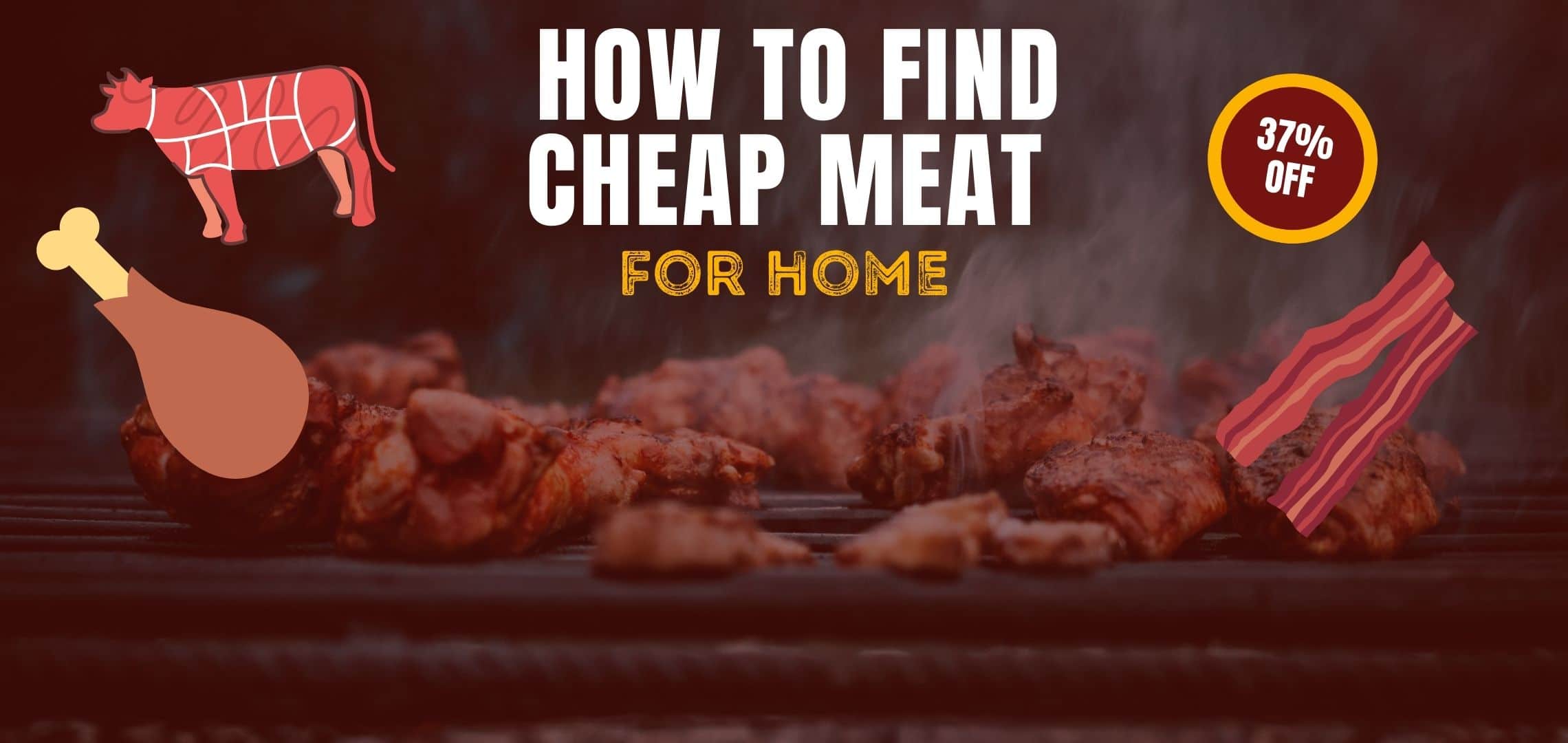13 Ways How To Find Cheap Meat For Home
Important Note: When you buy through our links, we may earn a commission. As an Amazon Associate we earn from qualifying purchases. Content, pricing, offers and availability are subject to change at any time - more info.
Key Takeaways
- There are numerous ways to find and purchase cheaper meat.
- Most stores have promotional species, discounts, or end-of-season sales, which they advertise on fliers and websites.
- Certain meat cuts, processing methods, and preservation techniques are less expensive than others, so choosing the cheaper meats saves you money. Purchasing in bulk is another fantastic means to save in the long run.
- When you buy meat, purchasing a whole carcass directly from the farmer or butcher is a great way to save. Alternatively, farming meat for yourself is a way to ensure good quality fresh meat.
- When shopping for cheap meat, the savviest method is to plan ahead of time and shop around for the best deals. Considering the lifestyle adjustment of eating less meat per week will also help reduce the costs.
- You should always take care when purchasing meat close to its sell-by date, and you should not sacrifice quality for cost.
As the cost-of-living increases, most of our salaries do not, unfortunately, follow the same pattern. At the risk of sounding like a grandparent, “back in the day,” meat was far more affordable. Nowadays, supply chain issues, labor shortages, and increasing expenses have pushed the cost of meat exponentially. Even though the costs are inflated, many still enjoy animal protein and would rather not go without it. So how do we fix this conundrum?
Advertisement
Below we investigate 13 ways how to find cheap meat:
- Key Takeaways
- Where To Get Cheap Meat When Purchasing From A Store
- Finding Meat At Other Places (Not Store-Bought)
- Other Ways To Find Cheap Meat Or Reducing Its Cost
- What Is The Average Cost Of Meats?
- Related Questions
Where To Get Cheap Meat When Purchasing From A Store
Most of us buy groceries from local stores for convenience and practicality’s sake. Unfortunately, we often pay for this convenience. Fortunately, there are ways around paying extra for meat at your local store by using some savvy shopping practices.
Look For Discounts And Promotions At Local Stores
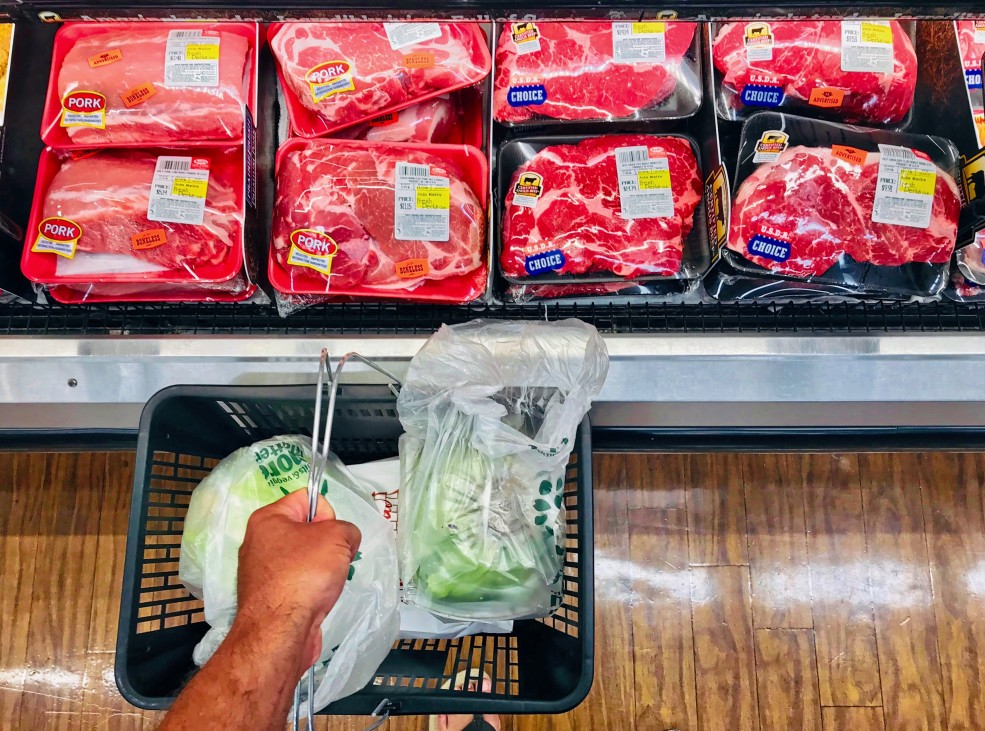
Many grocery and other stores sell products at discount rates. They usually advertise these items a week or month before, so grabbing fliers and looking at the specials is a great way to stay abreast.
The list of discounts, promotions, and special deals available is extensive. The catch is that you’ll need to keep up-to-date with the relevant ones and act timeously so as not to miss out.
Advertisement
Some discounts/specials include:
- Coupons (including Applegate, Jennie-O, and Laura’s Lean Beef coupons)
- End of season sales (leftovers from Thanksgiving and Christmas)
- General, special deals (as stores receive new stock, old stock needs to go)
If you don’t grab a flier, keep your eyes open while shopping, as many stores mark specials/discounts on the packaging.
Consider Meat That Is Past Its Sell-By Date
This point is a bit of a tricky one. We are not saying you should purchase expired meat, but meat from most stores is usually marked with a “sell-by” and a “use-by” date. These dates are often a day or two apart (sometimes longer).
Shops may sell meat that has passed its sell-by date at a better price. Care should always be taken when purchasing meat close to its expiry date. If the meat is at a reduced price, it looks, smells, and feels fine; then you might have found a deal.
Try Purchasing Different Cuts
A significant factor determining the cost of meat is the type of cut you purchase. Some cuts are limited, and therefore the price of those portions is usually much higher (per pound) than other sections.
For example, you pay a higher price per pound for steak than for ground beef. If you want meat but can’t afford that T-bone or boneless chicken breast, then look around and see if bone-in, whole, shanks, ground, or other similar cuts are cheaper.
Advertisement
The degree of processing also contributes to the overall cost of meat, e.g., smoked bacon usually costs more than pork chops.
Rather Purchase Meat In Bulk Quantities
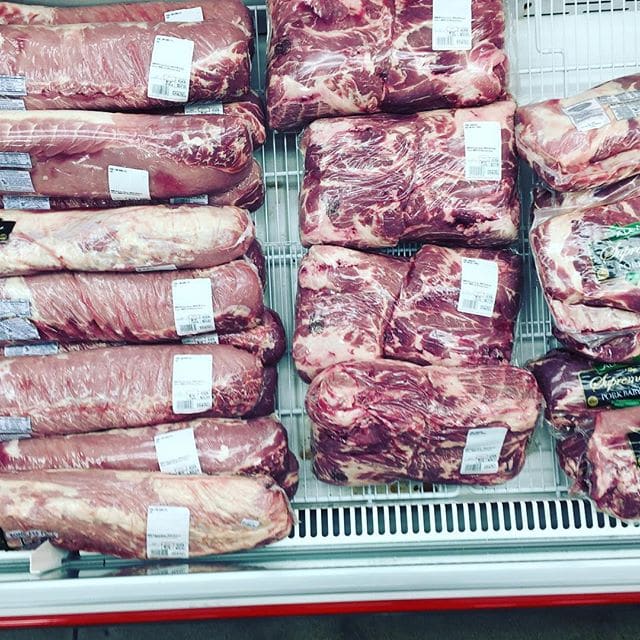
Buying in bulk generally works out cheaper, whether it be juice, toilet paper, or, in this case, meat.
While the “direct” price is higher for the item (i.e., you pay more at the cash-out), the price per pound is better, which means you get more value for money.
The most significant downside to purchasing meat in bulk is if you lack the storage capacity to freeze the meat. The other drawback of buying in bulk is that you might not have enough cash to purchase the bulk amount.
If you lack the storage space, or funds, sharing with family or friends is a great way to use bulk deals, provided they contribute to purchasing.
Purchasing Processed And Preserved Meat Is Cheaper

Processed and preserved meat is sometimes a cheaper option. Most critical is to look at the price per pound.
Processed meats, like bologna, are usually cheaper than other types of meat because they are manufactured from offcuts.
Advertisement
Certain preserved meats, like corned beef, are also cheaper than fresh meat. Frozen meat also tends to be cheaper than fresh meat. If you need to purchase cheaper meat, opting for one of these types will save you some money.
Try Purchasing Meat Of Different Animal Species
Many of us enjoy good old beef. However, other meats are often cheaper per pound than beef due to farming practices, supply and demand, and other expenses.
Chicken is generally a cheaper alternative to beef. However, certain pork cuts are also cheaper. Other “exotic” meats like duck, rabbit, venison, etc., are also good alternatives.
If you’d like to save on costs but still desire animal-based protein, switching from beef to chicken, pork, or other species is usually a good alternative. Who knows, maybe it’s the change you’ve been looking for?
Visit More Affordable Grocery Stores

We often get stuck in going to the same store for many reasons, whether convenience, a force of habit, or even stigma/image. However, sticking to one store might be doing you an injustice.
Often up-market stores sell meat and other products at a higher premium as they cater to an “up-market” clientele. This mindset is often nonsensical.
While there are definitive benefits in purchasing certain items from more expensive stores, meat from other “middle-income” stores is perfect.
It would be best if you were to practice wisdom as some lower-income stores’ meat quality is not good. But if the meat looks and smells okay, and the store has a good reputation, then there is no reason not to purchase there.
This point applies particularly to an “image” factor and not so much to meat quality. You should always buy good quality meat.
Advertisement
Finding Meat At Other Places (Not Store-Bought)
Sometimes purchasing grocery store meat is the only option available to us. However, the price of this meat will most often be higher because of the logistics and other expenses involved with getting it to your area. If the option is available to you, purchasing meat from other (non-grocery store) suppliers is superior.
Buying Directly From A Farmer Or Butcher Is Often Better
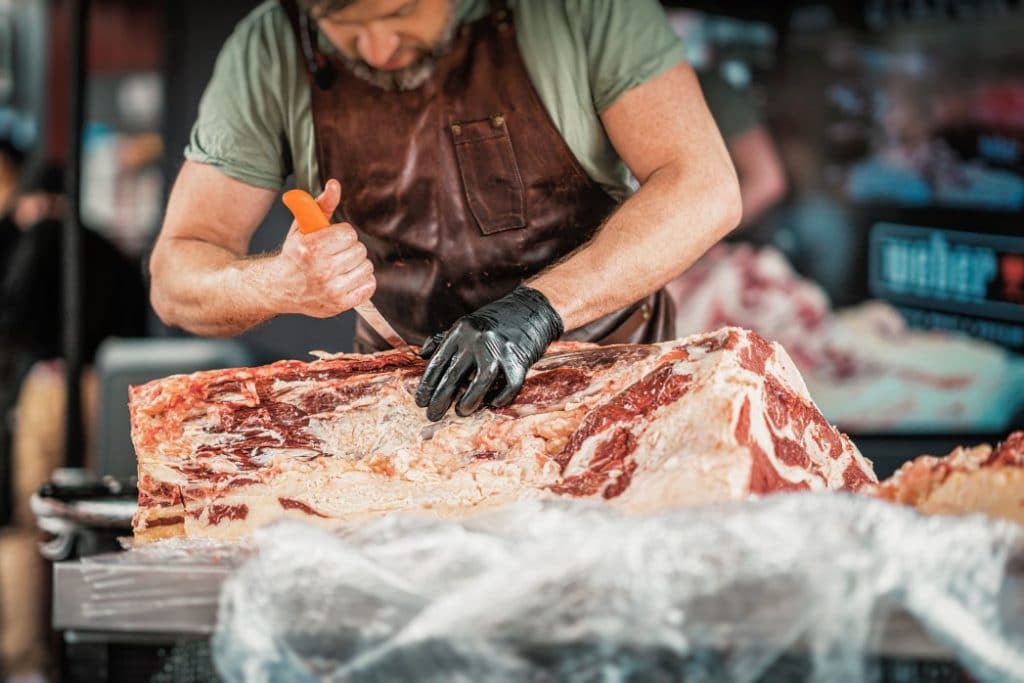
There are very few instances when purchasing directly from a farmer or butcher is bad. If you can support local farmers, you should. Due to cutting out the “middle-man,” the cost of meat is usually less.
You’ll often be able to choose a live animal or whole carcass for processing. These purchases work out cheaper per pound, and you’ll take the whole carcass to a butcher (often the farmer delivers it), where they process it for you as needed, according to the cuts you want.
Markets, butcheries, or farmyards are some of the ways that you could purchase meat directly from the farmer. Although this method is initially pricey (a whole cow costs conceivably more than a pack of steaks), the saving you make in the long run is worth it.
The meat you get from a whole carcass could last you for up to a year, and because it’s one price, the various cut prices are “standardized.”
Save By Farming Meat For Yourself
Another great option is to grow/farm animals for meat yourself. This farming usually works out slightly cheaper than buying from a store, but you’ll need to live in the correct place.
While cows, pigs, or sheep require smallholdings, keeping meat rabbits or a few ducks/chickens might be feasible in a suburb.
Although your costs might be comparable to those of a grocery store, the benefit of raising your meat is you know what went into them (what they ate and what medications were used). You can do it yourself or take the animal to a local abattoir/butcher when processing the meat.
Before starting a homestead, you’ll need to check with the local legislation on what you can keep and how many.
“Hunting” For Your Meat Is Often A Cheaper Option

For those who are not against it, hunting is another way to secure good quality, relatively cheap meat.
“Hunting” also includes fishing and birding. Depending on the season, and your freezer space, you can accumulate a stockpile of meat to last you for the year. Once more, a butcher can assist you in processing the meat to your specifications.
The downside is that you’ll need to be able to hunt, but if you do, then cheap meat is only a track, trigger pull, or bait up and cast away.
Other Ways To Find Cheap Meat Or Reducing Its Cost
When searching for cheap meat, you might need to endure various energy expenditure levels and compromises. If you manage to stick it out, the reward is a goldmine of affordable meat.
Shop Around And Plan When Purchasing Meat
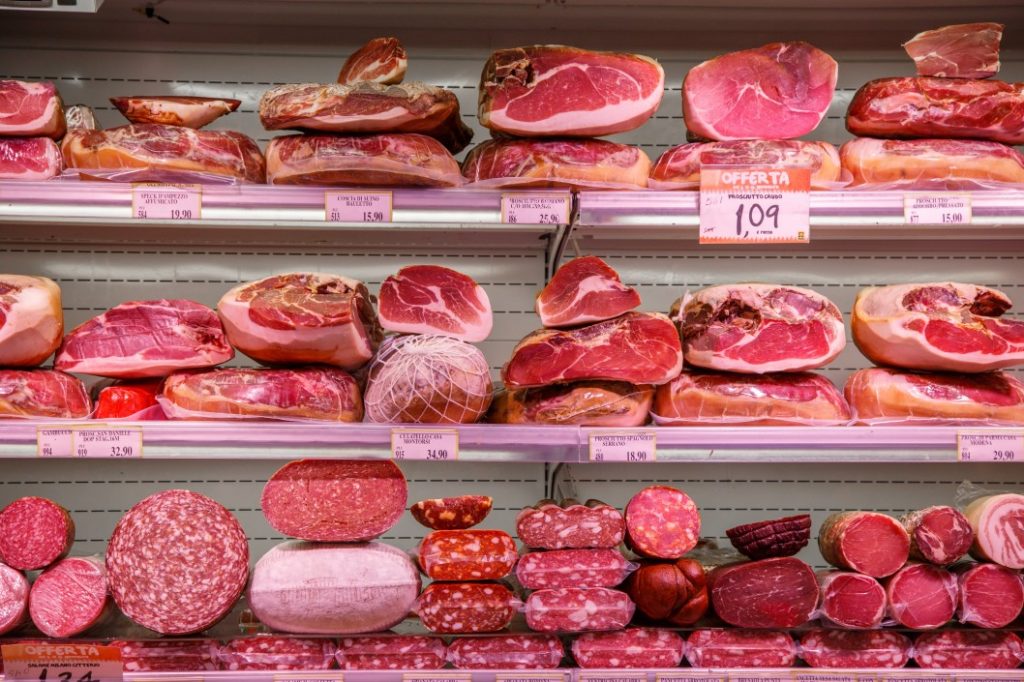
The best option when looking for affordable meat is to shop around. The beauty of the internet is that many stores have websites. They’ll often publish electronic fliers on these websites or give the day, week, and monthly specials available in-store. When shopping around, use these resources to compare particular products from different stores.
Many stores have specific dates/days when they reduce prices, so making a note of when your most frequented store changes its prices is also a great idea.
Aside from a finger on the “discount’s pulse,” you’ll need to plan when purchasing meat. Meal planning, knowing when you’re expecting parties or grills, and other occasions is a great way to help you purchase a suitable amount of meat at a good price.
You purchase the correct quantities when planning. You’re also able to regulate better the amount of meat you eat.
Butcher Whole Animals Yourself
While it may seem more expensive up front to buy a whole animal like a cow or lamb for hundreds of dollars. However, it can end up being much less expensive if you are able to figure out how to properly butcher the meat without wasting it and you have the storage space.
The cheapest whole animal you can buy is a chicken which can result in a cost saving of around $10 per week when you buy whole chicken and butcher it yourself. You can get these at mostly any grocery store. The larger animals are not as easy to buy. As mentioned in the previous steps, buying from a butcher is the best way to go. If you have the storage and the skill, butchering animals yourself is a great way to save money in the long run.
Think About A Lifestyle Change

Don’t worry; we’re not for a minute suggesting you become vegan or vegetarian – the truth be told, that’s probably a more expensive lifestyle to sustain with all the meat alternatives or fresh food you have to buy! But, consider revising how much meat you consume at each meal.
Although many of us love a good roast, grill, and bacon and eggs for breakfast, maybe consider limiting meat to one meal a day, or observing meatless days, once or twice a week. There are some health benefits, but the most significant benefit is that your pocket will feel the difference. Beans, lentils and other foods are just as hearty as meat and packed with protein. Meatless chili, meatless moussaka or meatless pesto lasagna are great low cost meat replacement ideas to swap out meat one day.
Mixing things up a bit is also a great idea. For example, eating a cheaper cut on a more regular basis and then “treating” yourself to a ribeye steak (or any other expensive, delicious cut) is a way to save some money and appreciate the good things better.
What Is The Average Cost Of Meats?
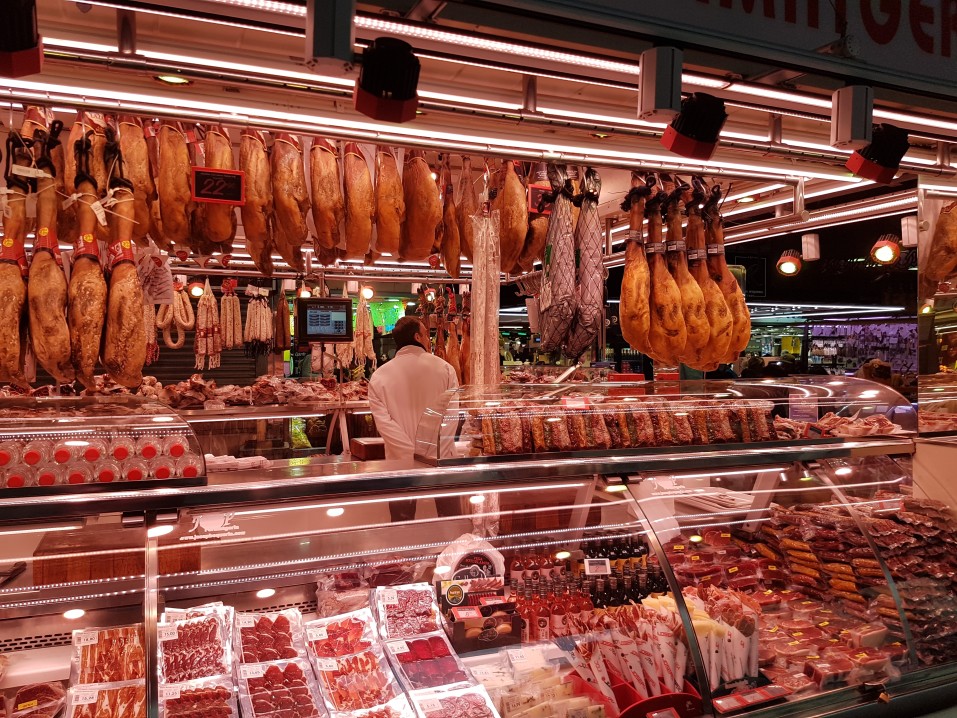
Although the price of meat varies considerably according to the quality (grading), the season, supply and demand, location, and many other factors, the table below summarizes the average cost of specific cuts/portions of meat commonly bought.
| Type of meat | Cut/Portion type | Average price |
| Beef | Whole carcass | $140 per 100 pounds |
| Beef | Brisket | $4 to $55 per pound |
| Beef | Chuck | $5.173 per pound |
| Beef | Shank | $6.29 per pound |
| Beef | Strip steak/New York strip | $12.99 to $14.99 per pound |
| Beef | Tenderloin | $25 to $50 per pound |
| Beef | Top Sirloin | $7.99 to $10.99 per pound |
| Beef | Tail | $10 to $12 per pounds |
| Beef | Porterhouse/T-bone steak | $15 to $22 per pound |
| Beef | Ribeye steak | $12.99 to $14.99 per pound |
| Beef | Ground beef | $4.26 to $6.4 per pound |
| Chicken | Whole | $1.28 per pound |
| Chicken | Boneless chicken breasts | $3.73 per pound |
| Chicken | Chicken legs (drumsticks) | $1.83 per pound |
| Pork | Whole carcass | $6 to $7 per pound |
| Pork | Chops (average for both bone-in and deboned) | $4.13 per pound |
| Pork | Bacon | $7.21 per pound |
| Turkey | Whole | $1.39 per pound |
Related Questions
Is Expired Meat Worth Buying, And How Do I Know If It’s Okay?
While the temptation to purchase expired meat is tempting before you grab the discounted bundle make sure that the meat is still healthy. Although the store’s meat is expired, it does not mean that it’s gone bad.
The subsequent steps will assist you in determining if the meat is safe to eat:
- Smell the meat. Your nose is your best tool for the job. If the meat has an acrid, off-putting, or putrid smell, don’t buy it! The chances are it’s gone bad.
- Look for discoloration and excess liquid. Meat that’s gone or going bad has a gray, saggy look. Off meat also tends to have juices pooling (more than fresh meat). You might also notice a slimy sheen on the expired meat, a good indication that you should give it a skip.
- Touch the meat. Although probably not feasible, touching the meat is another giveaway. Off meat has a slimy layer that develops over it, plus it loses its elasticity, so when you gently press your finger into it, it does not return to its original shape.
- The taste would be the final step, but you would have bought the meat already. If the meat has an “off-taste,” rather throw the rest away.
Purchasing expired meat is not the end of the world (or meat that is close to expiring/expires on that day), but you’ll need to put it through the “sense” test before you decide to take it home and eat it.
Where Do I Find Out About Cheap Meat/Specials?
The internet is a fantastic information hub. Many large stores have websites where they often advertise upcoming or current specials.
Alternatively, a Google search of meat vendors provides a plethora of results. Some communities use WhatsApp groups and other social media platforms to keep their neighbors informed.
If you’re at a grocery or other store, collect a flier as they inform you of current or future specials at that shop.

